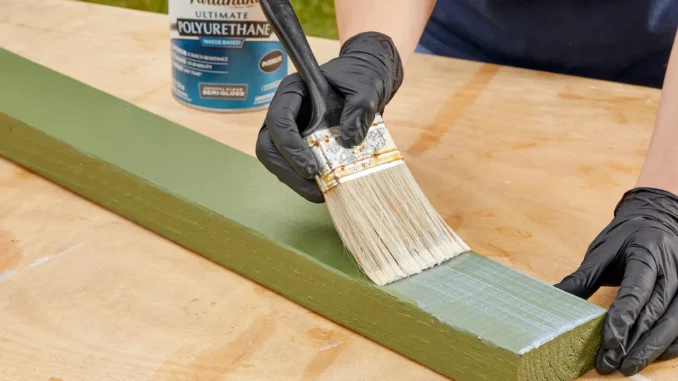
Can You Paint Treated Wood?
When embarking on home improvement or outdoor projects, treated wood often takes center stage due to its longevity and resistance to environmental factors like moisture, insects, and decay. However, a common question arises among DIY enthusiasts and professionals alike: Can you paint treated wood? While it’s certainly possible, the process is more involved than simply applying paint to any regular piece of wood.
In this guide, we’ll thoroughly explore the best practices and essential information you need to achieve a successful paint job on treated wood. From the type of treatment used to the proper preparation methods and the best paints to use, we’ll answer every question you have about painting treated wood. Whether you’re planning to paint a new deck, a fence, or a garden structure, by the end of this article, you’ll know exactly how to tackle your project and achieve long-lasting results.
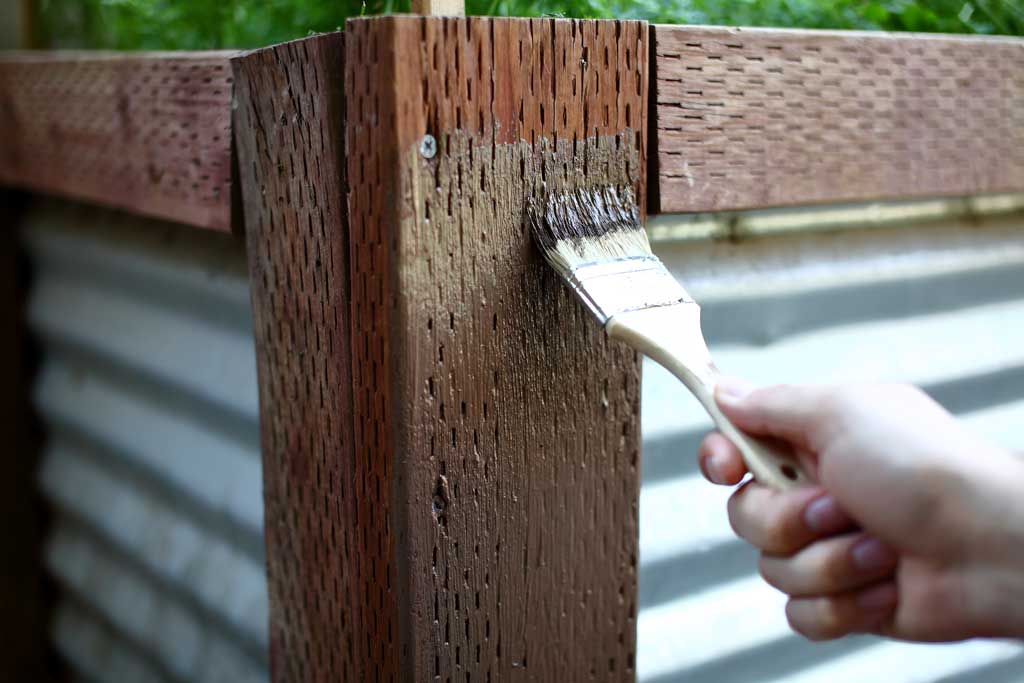
What is Treated Wood? Understanding the Basics
Can You Paint Treated Wood After It’s Been Treated?
Treated wood has undergone a specialized process that increases its durability, especially for outdoor applications. The treatment often involves pressure-treating the wood with chemicals like copper or arsenic to prevent rot, insect damage, and fungal growth. While this process gives the wood excellent protection against decay, it also introduces a layer of difficulty when it comes to painting.
Can you paint treated wood directly after treatment? Unfortunately, the answer is no. The reason lies in the nature of the treatment process itself. The wood is often saturated with moisture and chemicals, making it incompatible with paint until it has had adequate time to dry and cure. If you paint treated wood too soon, the paint will struggle to bond, leading to peeling, blistering, or uneven coverage.
How Treatments Protect Wood but Affect Paint Adhesion
While chemical treatments are great for protecting wood from the elements, they can also create a surface that is resistant to paint adhesion. The chemicals used in treatment processes can leave behind residues or moisture that prevent paint from properly bonding to the wood fibers. This is why waiting before painting is crucial.
Can you paint treated wood without any challenges? It’s unlikely without taking proper steps to ensure adhesion. Treating the wood changes its surface properties, which can result in an uneven or poor-quality finish if not handled correctly. The more you understand about these challenges, the better prepared you will be to tackle your treated wood painting project.
Can You Paint Treated Wood? The Short Answer and Why It’s Not Simple
Yes, you can paint treated wood, but it requires some important preparation steps. When asking can you paint treated wood, remember that the process is different from painting untreated wood. The challenge arises from the moisture retained within the treated wood and the chemical residues that could interfere with the adhesion of paint. The paint you use, the preparation process, and the drying time are all critical factors in ensuring a long-lasting and attractive finish.
Why It’s Not Simple to Paint Treated Wood
The main challenge with painting treated wood lies in the moisture content. Even though the wood may appear dry on the surface, the chemicals used in treatment often leave the interior of the wood damp. This moisture can interfere with the paint’s ability to bond, leading to issues like peeling, cracking, and blistering.
If you’re wondering, can you paint treated wood directly after it has been installed, the answer is no. Patience is key. Allowing treated wood time to dry is the most important step before applying any paint. Without this crucial step, your paint job will be doomed to fail.
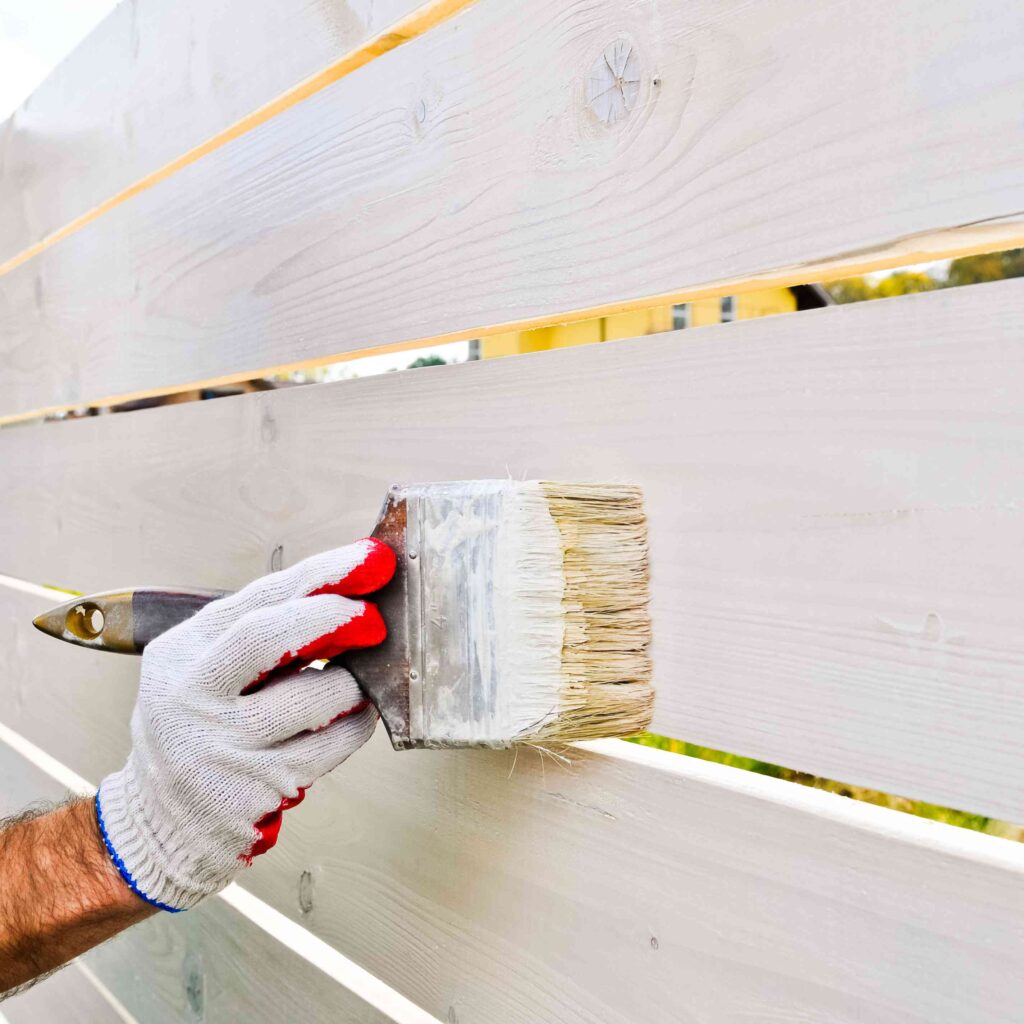
Why It’s Important to Wait Before Painting Treated Wood
How Long Should You Wait Before Painting Treated Wood?
After treated wood has been installed, it is essential to wait for a period before painting. You may be asking: Can you paint treated wood immediately? The answer is no. After treatment, the wood is still saturated with moisture, and it must be allowed to cure properly. Typically, you should wait for at least 4 to 8 weeks for the wood to dry, depending on the weather and the type of treatment used.
Why does this waiting period matter? When moisture is still trapped in the wood, it can push against the paint and prevent proper adhesion. This leads to an unprofessional finish that is prone to peeling and bubbling. By giving the wood time to dry and release excess moisture, you ensure that the paint will bond properly and create a durable finish.
Risks of Painting Too Soon: Peeling, Blistering, and Poor Adhesion
What happens if you don’t wait for the wood to dry? If you attempt to paint treated wood too soon, you risk significant issues with the paint adhering to the surface. The trapped moisture can force the paint to bubble, peel, or crack. Paint may fail to form a uniform layer, leading to unsightly patches of bare wood. Even if the paint seems to adhere initially, it will deteriorate much faster than if the wood had been given proper drying time.
Can you paint treated wood too soon? The short answer is no — rushing this process will only lead to costly mistakes and a less-than-ideal result.
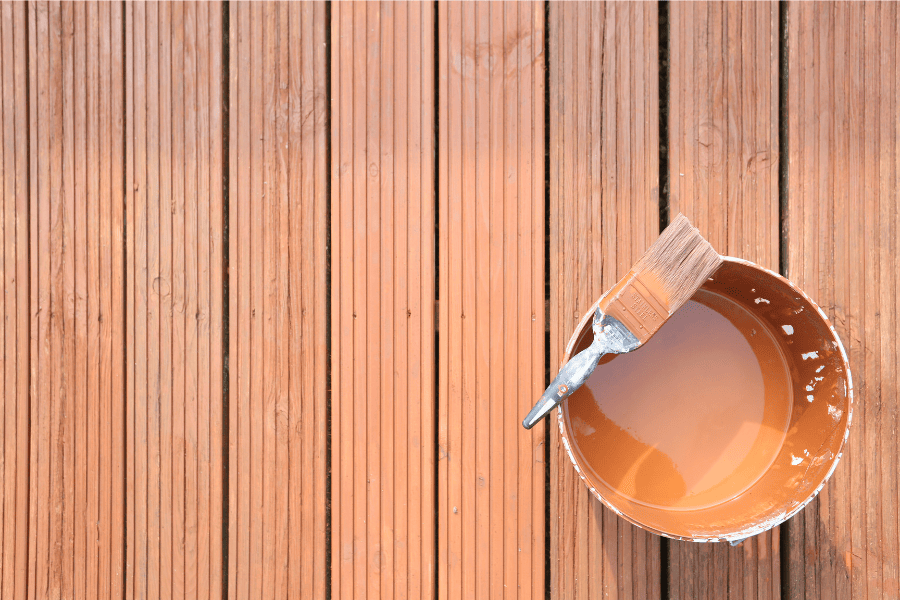
How to Prepare Treated Wood for Painting: Essential Steps
Properly preparing treated wood before painting is crucial for ensuring that the paint adheres well and lasts over time. Here’s a breakdown of the necessary steps to get your wood ready for paint.
Cleaning the Surface: Removing Dirt, Moisture, and Residues
Before applying any paint to treated wood, you must clean the surface thoroughly. Dust, dirt, moisture, and residual chemicals from the treatment process can all prevent the paint from bonding correctly. Using a pressure washer or garden hose can help remove surface dirt and grime. Be careful not to over-saturate the wood — excess moisture can lead to further complications.
Can you paint treated wood with dirt or residues still on it? Definitely not. A clean surface is essential for ensuring proper adhesion and a smooth finish. After cleaning, let the wood dry completely before proceeding to the next step.
Sanding the Wood: Ensuring Proper Adhesion and Smoothness
Sanding the wood before painting is another critical step. Sanding helps to smooth the surface of the wood, eliminating rough spots and preparing the wood for an even coat of paint. It also opens up the pores of the wood, which allows the paint to better adhere.
Can you paint treated wood without sanding? While you technically can, sanding is highly recommended to ensure a smooth and durable finish. Use medium-grit sandpaper to sand the wood lightly, and be sure to remove any dust or particles before applying the primer or paint.
Drying Time: How Long Should You Wait After Treatment?
Patience is key when it comes to drying time. Even after you clean and sand the wood, you still need to give it time to dry. As we’ve discussed earlier, it’s important to wait 4 to 8 weeks for the wood to cure properly. You can test if the wood is ready for painting by sprinkling a few drops of water on the surface. If the water beads up, the wood is still too moist. If it absorbs the water, it’s time to paint.
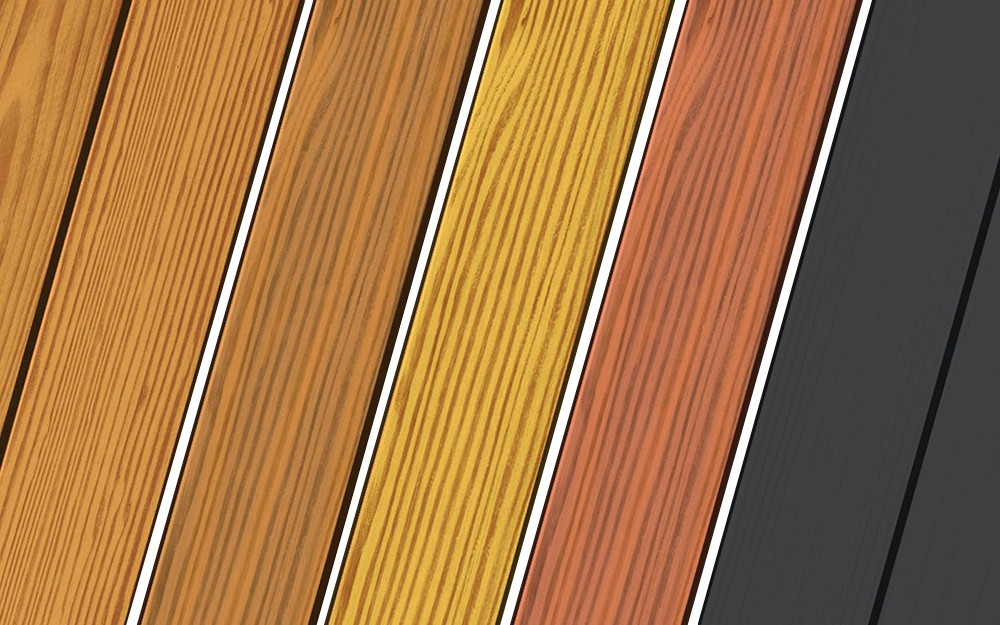
Choosing the Right Paint for Treated Wood
Can You Paint Treated Wood with Any Paint?
When choosing the right paint for treated wood, not all paints are created equal. While you may be tempted to use standard household paint, treated wood requires specific types of paint for the best results. The two most common types of paint used for treated wood are oil-based and latex paints.
Can you paint treated wood with any type of paint? The answer is no — oil-based and latex paints each have their own unique benefits for treated wood, but choosing the right one depends on your specific needs and the project’s location. Oil-based paints tend to offer better adhesion and are more durable in harsh weather conditions. However, latex paints are easier to work with, dry faster, and are often more flexible, making them a good choice for projects that will face fluctuations in temperature.
The Importance of Primer in Creating a Solid Base
Primer is crucial when painting treated wood. It serves as the first layer that helps paint adhere to the surface and provides a smooth foundation for the finish coat. Without primer, the paint is more likely to peel or fade prematurely.
Can you paint treated wood without primer? It is highly recommended to always apply a primer to ensure a solid bond between the wood and the paint. This is especially important for treated wood, as it creates a barrier between the wood’s surface and the paint.
Step-by-Step Guide to Painting Treated Wood
Prepare Your Workspace: Set-Up Tips for a Clean, Safe Environment
Before you begin painting treated wood, make sure your workspace is prepared. Lay down a drop cloth to protect the surrounding area from paint splatters. Ensure good ventilation, especially if you’re working indoors, as the fumes from the paint can be overwhelming. If you’re working outside, choose a day with mild weather to ensure the paint dries properly.
Can you paint treated wood in a cluttered, unorganized space? No, a clean and organized workspace is vital for a successful project. A tidy area will make the process more efficient and help you avoid mistakes.
Apply Primer First: The Crucial First Layer for Bonding
Primer is the first layer of protection and adhesion. Use a high-quality paintbrush or roller to apply an even coat of primer to the treated wood. Allow it to dry completely before moving on to the next step. The primer will help ensure the paint adheres properly, resulting in a smoother and longer-lasting finish.
Painting the Wood: Techniques for Even Coats and a Smooth Finish
Once the primer has dried, it’s time to paint. Use long, even strokes with a paintbrush or roller to apply the paint, ensuring that it coats the surface evenly. Can you paint treated wood with just one coat? It’s recommended to apply at least two coats of paint for optimal coverage and durability.
Drying and Curing: How Long to Let Each Coat Dry
Each coat of paint needs to dry fully before applying the next. The drying time will depend on the type of paint used, but typically, oil-based paints take 6 to 8 hours to dry, while latex paints may dry faster, in about 1 to 2 hours. Make sure each layer is completely dry to avoid smudging or uneven application.
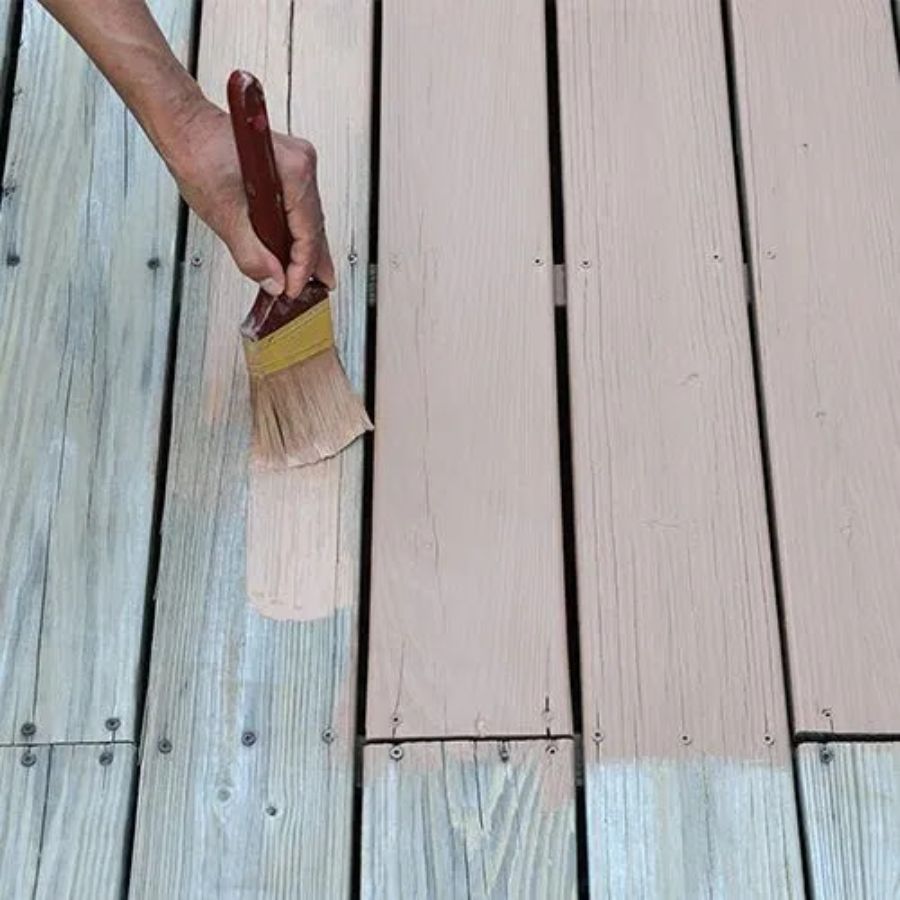
Common Mistakes When Painting Treated Wood (and How to Avoid Them)
Painting Too Soon After Treatment
One of the biggest mistakes you can make is painting treated wood too soon. Can you paint treated wood immediately? Not at all — waiting for the wood to dry and cure properly is essential for ensuring that the paint bonds effectively and doesn’t peel or bubble.
Skipping the Primer
Skipping the primer is another common mistake. Can you paint treated wood without primer? While it’s technically possible, it’s not recommended. Primer plays a key role in helping the paint adhere and preventing future peeling or fading.
Using the Wrong Type of Paint or Not Applying Enough Coats
Using the wrong type of paint or skimping on the number of coats can lead to a subpar finish. Make sure you use paint designed for treated wood and apply multiple thin coats for the best result.
How to Achieve a Long-Lasting Finish on Treated Wood
Protecting the Paint Job from Weather and Wear
Once your treated wood is painted, it’s important to protect it from the elements. Applying a clear topcoat or sealer can help protect the paint from moisture, UV rays, and wear over time.
Sealing and Maintaining Your Treated Wood Surfaces
Regular maintenance is essential to keeping your treated wood looking its best. Inspect your paint job every year and apply additional coats of sealer or paint as necessary to protect against the elements.
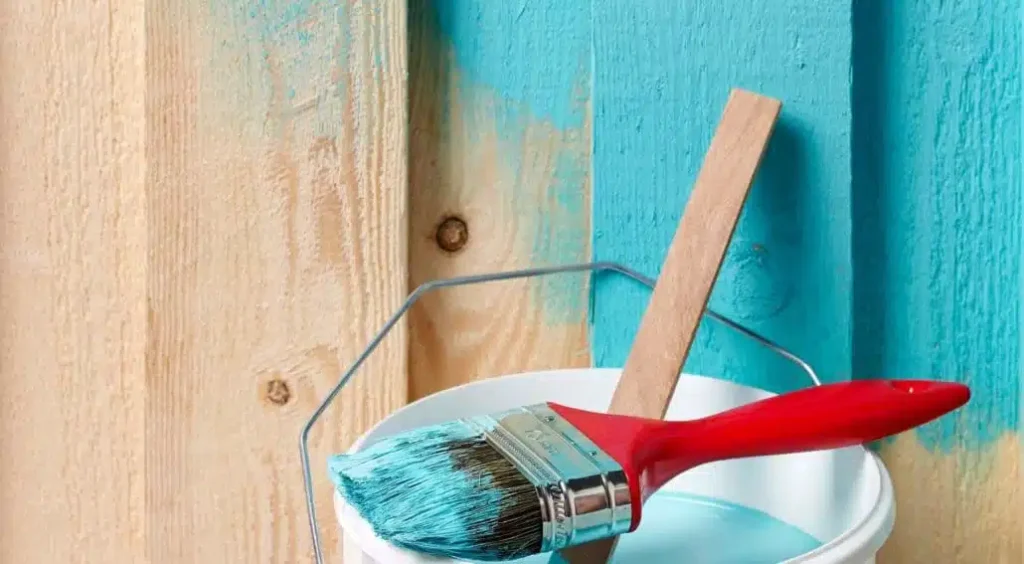
Can You Paint Treated Wood Outdoors? Best Practices for Exterior Projects
Special Considerations for Painting Outdoor Treated Wood
Outdoor projects like decks and fences require additional care when painting treated wood. Can you paint treated wood that will be exposed to rain, sunlight, and extreme temperatures? Yes, but it’s crucial to choose the right paints designed for outdoor use.
Choosing Weather-Resistant Paints
When painting outdoor treated wood, always opt for weather-resistant paints that are designed to stand up to moisture and UV rays. This ensures that your paint job will last through all types of weather conditions.
Conclusion: Can You Paint Treated Wood? Tips for a Perfect Finish
In conclusion, the answer to can you paint treated wood is yes, but with the proper preparation. By waiting for the wood to dry, choosing the right materials, and following the steps outlined in this guide, you can achieve a durable, beautiful finish that will stand the test of time. Remember to always be patient and take your time to ensure the best results for your treated wood painting project.